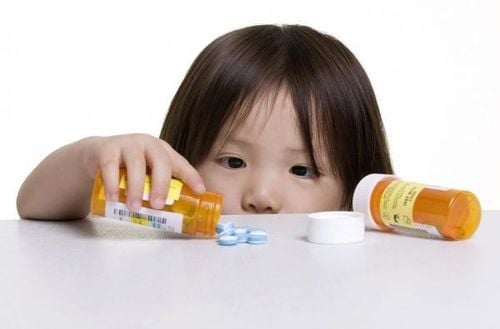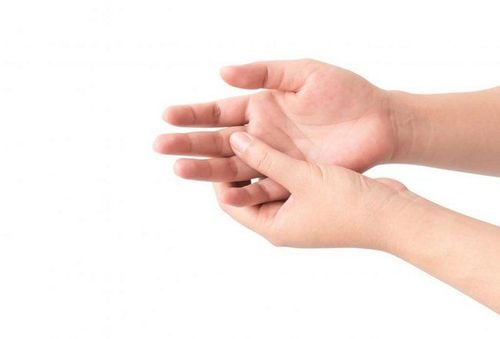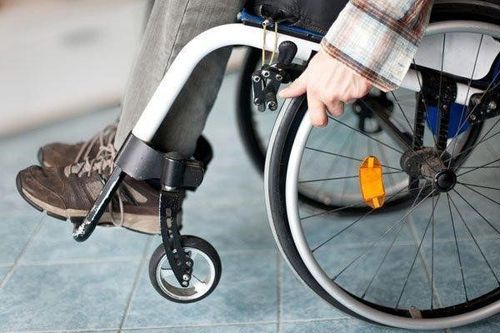This is an automatically translated article.
Guillain-Barre syndrome in children is a rare disease that causes acute flaccid paralysis. If not detected and treated promptly, patients with Guillain - Barre have a high risk of death from respiratory failure or pulmonary aspiration due to swallowing dysfunction, or cardiac arrest due to damage to the nerves that supply the heart.1. What is Guillain-Barre syndrome in children?
Guillain-Barre syndrome is an acquired peripheral neuropathy known as Acute Demyelinating Polyradiculoneuropathy or Landry's palsy. This is a disorder in which the immune system attacks part of the peripheral nervous system. This condition damages nerves, causes inflammation, and leads to paralysis or muscle weakness if not treated promptly.
The typical symptom of the disease is acute peripheral flaccid paralysis, which progresses from a few days to less than 4 weeks and has many different clinical manifestations. The disease occurs at any age, usually children over 2 years old. In particular, the disease can be seen in infants. If not diagnosed and treated promptly, Guillain - Barre syndrome can lead to many unpredictable complications such as pulmonary aspiration, respiratory failure, cardiac arrest, and even death.
2. Causes of Guillain Barre Syndrome in Children
Currently, the exact cause of Guillain-Barre syndrome is still unknown. It usually appears days or weeks after a respiratory or gastrointestinal infection. Sometimes, surgery or vaccinations can also cause this syndrome.
The disease usually occurs after the patient has the following problems:
Viral infections: Coxsackie virus, influenzae, measles, rubella, cytomegalovirus, epstein-barr virus, herpes simplex, echovirus; Infections: Campylobacter Jejuni, Mycoplasma Pneumoniae, Salmonella, pertussis ; Immunization: Polio, mumps, tetanus, measles, hepatitis,...; Systemic diseases: Lupus, Sarcoidosis, Lymphoma. Factors that increase the risk of Guillain - Barre syndrome:
Gender: Boys have a higher risk of getting the disease than girls; Suffering from respiratory and digestive diseases such as influenza, Mycoplasma pneumonia, digestive diseases; Genital tract infections; Mononuclear; Hodgkin's disease.
3. Symptoms of Guillain - Barre syndrome in children
Have symptoms of infection, viral infection of the respiratory tract, gastrointestinal tract or previous vaccination 1 - 4 weeks; numbness, tingling in the legs, muscle weakness, spreading to the arms or upper body; Loss of reflexes in hands and feet; Pain in the muscles; Inability to move or exercise comfortably; Hypotension ; Face flushing; Sweating; Paralyzed edema; Irregular heartbeat; Blurred vision or double vision (seeing 2 images of the same object); Difficulty swallowing; Voice change; urinary retention; Urinary incontinence ; Shortness of breath. When a child has the above symptoms, parents need to take the child to the hospital immediately because the symptoms will become more serious in a very short time.
4. Diagnosis of Guillain-Barre syndrome in children

Hội chứng Guillain – Barre ở trẻ em: Tay và chân mất phản xạ
Diagnosis is based on history and clinical symptoms; Collecting cerebrospinal fluid: Cell protein dissociation, protein increase usually from the 2nd week, peak on the 10th day, normal cells and CSF may also be normal; Electromyography: Early, sensitive and more accurate diagnosis of elevated cerebrospinal fluid protein. The action potential is reduced or lost, the interference potential decreases in frequency and amplitude (severe interference potential loss), the conduction speed of motor impulses decreases; Tests to monitor, predict or differentiate from other diseases: Arterial blood gases when respiratory support is needed, ionogram differential diagnosis of myoclonic paralysis due to hypokalemia is a familial disease; Need to differentiate with transverse myelitis, myasthenia gravis, polio fever, polyneuritis, polymyositis.
5. Treatment of Guillain-Barre syndrome in children
Principles of treatment include supportive treatment and specific treatment. Specifically:
5.1 Supportive treatment Respiratory support and resuscitation care, improve treatment efficiency. Usually, measures such as oxygen breathing, nasal positive airway pressure, mechanical ventilation significantly reduce mortality in patients with Guillain-Barre syndrome.
Indications for respiratory support for the following cases: Inability to swallow, stagnation of viscous sputum; labored breathing, weak and ineffective breathing; PaO2 < 60 mmHg, PaCO2 > 50 mmHg; cyanosis, apnea; maximum inspiratory pressure < 30 cmH2O, maximum expiratory pressure < 40 cmH2O, vital capacity decreased by > 20%; Cardiovascular monitor in the presence of cardiac arrhythmias; Use pain relievers and anti-psychotic shock due to prolonged paralysis; Using antibiotics to treat lung infections, urinary tract infections caused by lying in one place for a long time; Physical therapy practice. 5.2 Specific treatment Antibody separation from plasma : Red blood cells and white blood cells are separated from plasma. The plasma-free blood cells are then put back into the patient's body; Intravenous high-dose Immunoglobulin 400 mg/kg/day x 5 days reduces the need for respiratory support, reduces mortality, and shortens recovery time. The effectiveness of this method is equivalent to plasma filtration and fewer side effects; Use blood thinners.

Sử dụng thuốc làm loãng máu điều trị hội chứng Guillain – Barre ở trẻ em
If treated promptly, most children with Guillain - Barre syndrome will recover completely. Treatments are most effective when given within the first 2 weeks of disease onset. In order to limit the progression of the disease, parents should take their children for follow-up examinations on schedule, follow the instructions of the doctor, do not arbitrarily take drugs or voluntarily quit to avoid sequelae.
Please dial HOTLINE for more information or register for an appointment HERE. Download MyVinmec app to make appointments faster and to manage your bookings easily.













